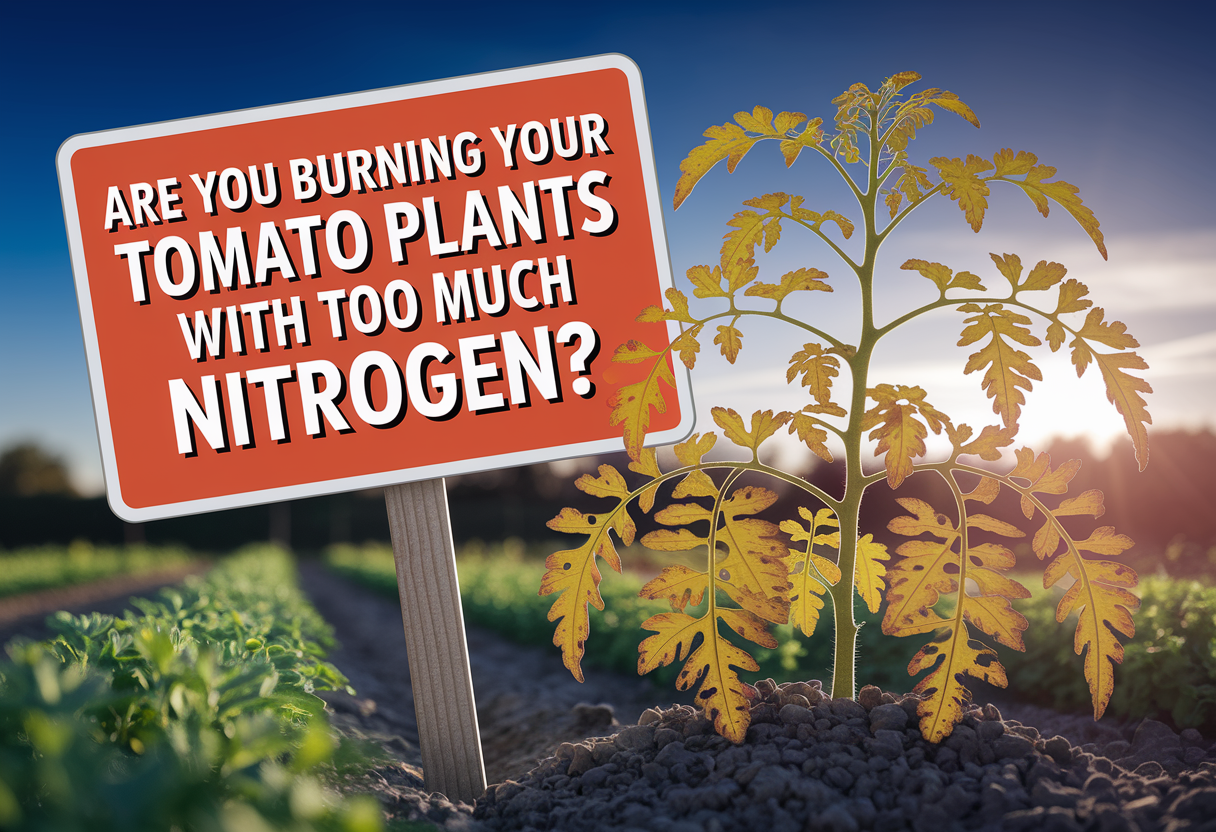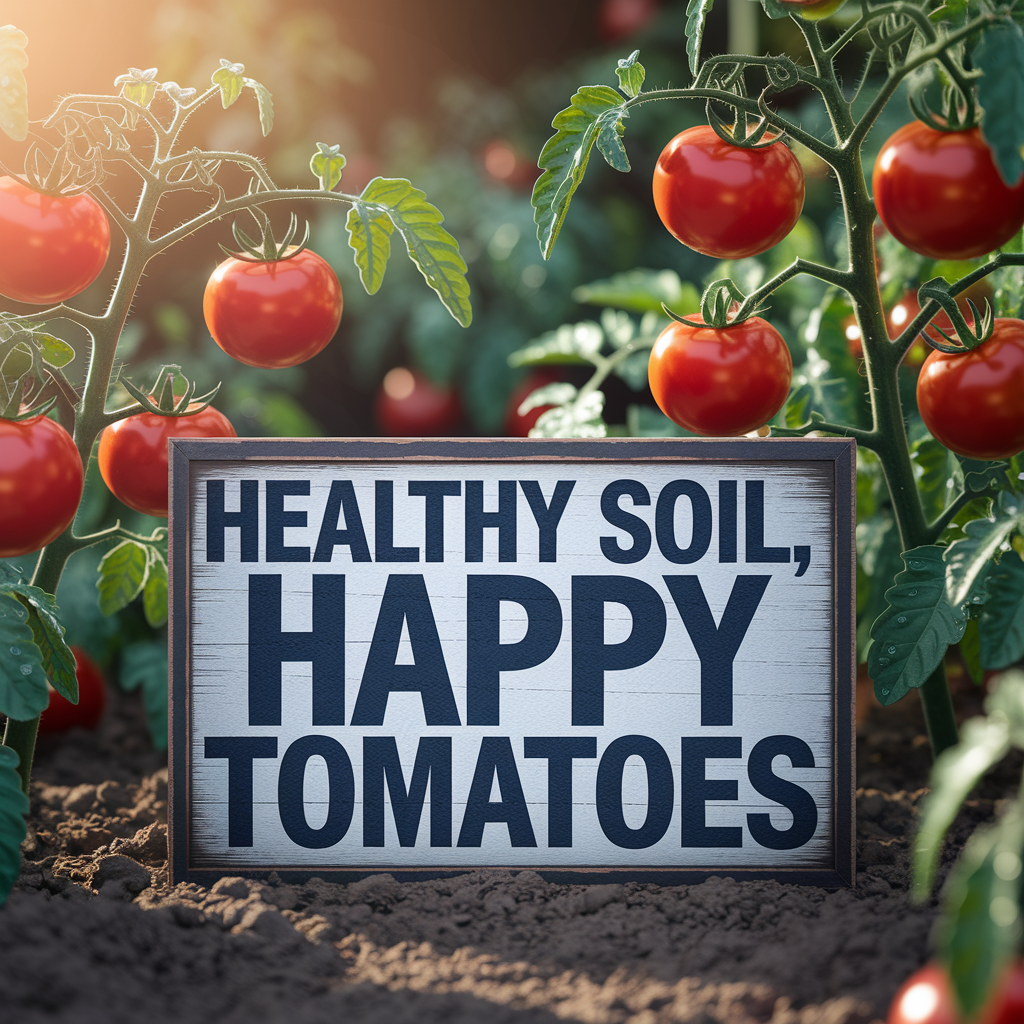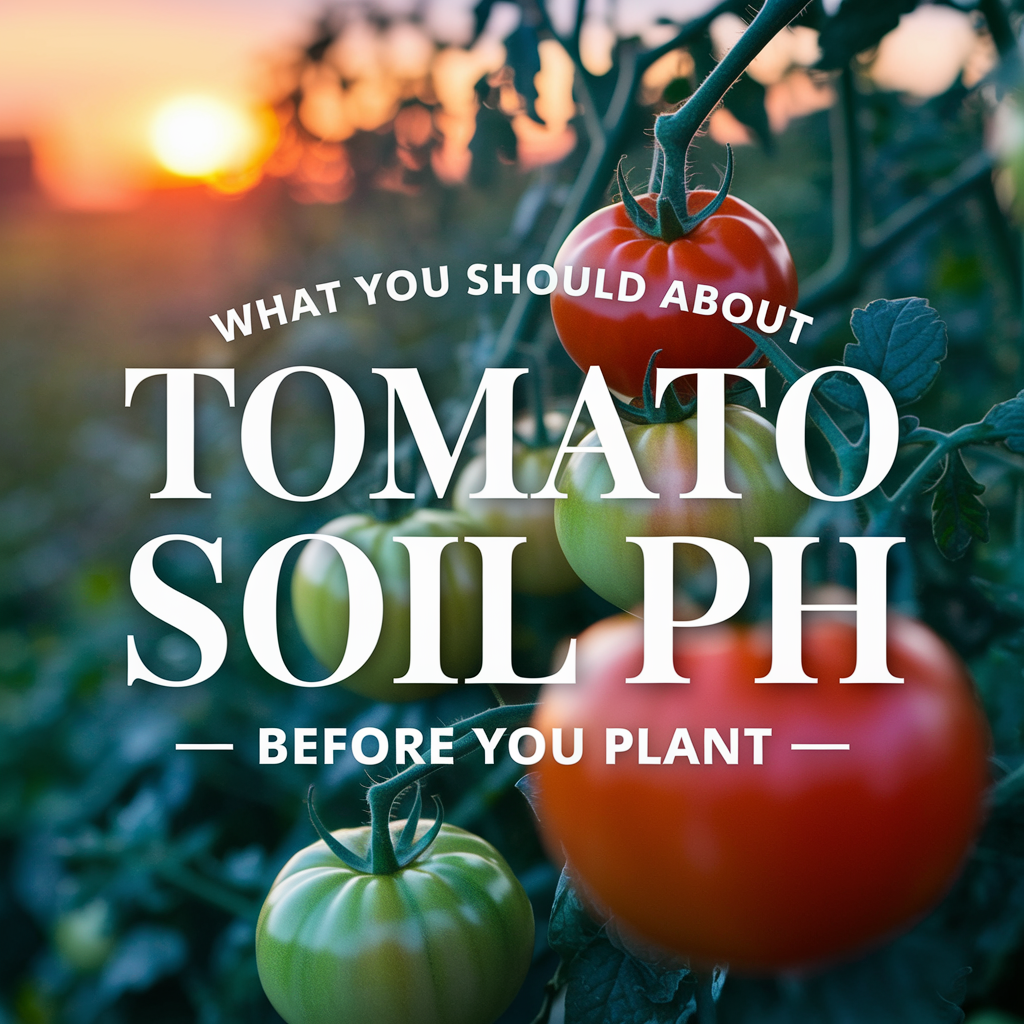
What Is Tomato Soil pH and Why Does It Matter?
Let me save you the headache I went through. I used to think soil was just soil — throw in a tomato plant and water it. Done, right? Not even close. Tomato soil pH is a huge deal. It controls how your tomato plants absorb nutrients. If your pH is off, they might not be able to take in calcium, magnesium, or even iron — no matter how much you feed them.
Tomatoes thrive in slightly acidic soil, typically around 6.0 to 6.8 pH. If the soil is too acidic or too alkaline, your plant’s roots basically shut down. You’ll see yellowing leaves, stunted growth, and fruit that either splits or doesn’t develop at all.
👉 If you’ve ever asked yourself things like “Why are my tomato plants turning yellow?”, your soil pH might be to blame.

How to Test the Soil pH for Tomato Plants
Once I realized pH might be my problem, I knew I needed to test my soil. I found that the easiest way to get answers fast was by using this 4-in-1 soil meter. It checks your pH, moisture, temperature, and sunlight — everything your tomato plants care about.
For a more in-depth analysis, especially of nitrogen levels, I also tried this soil pH and nitrogen test kit. It helped me fine-tune my soil before planting. And yeah, it made a big difference.
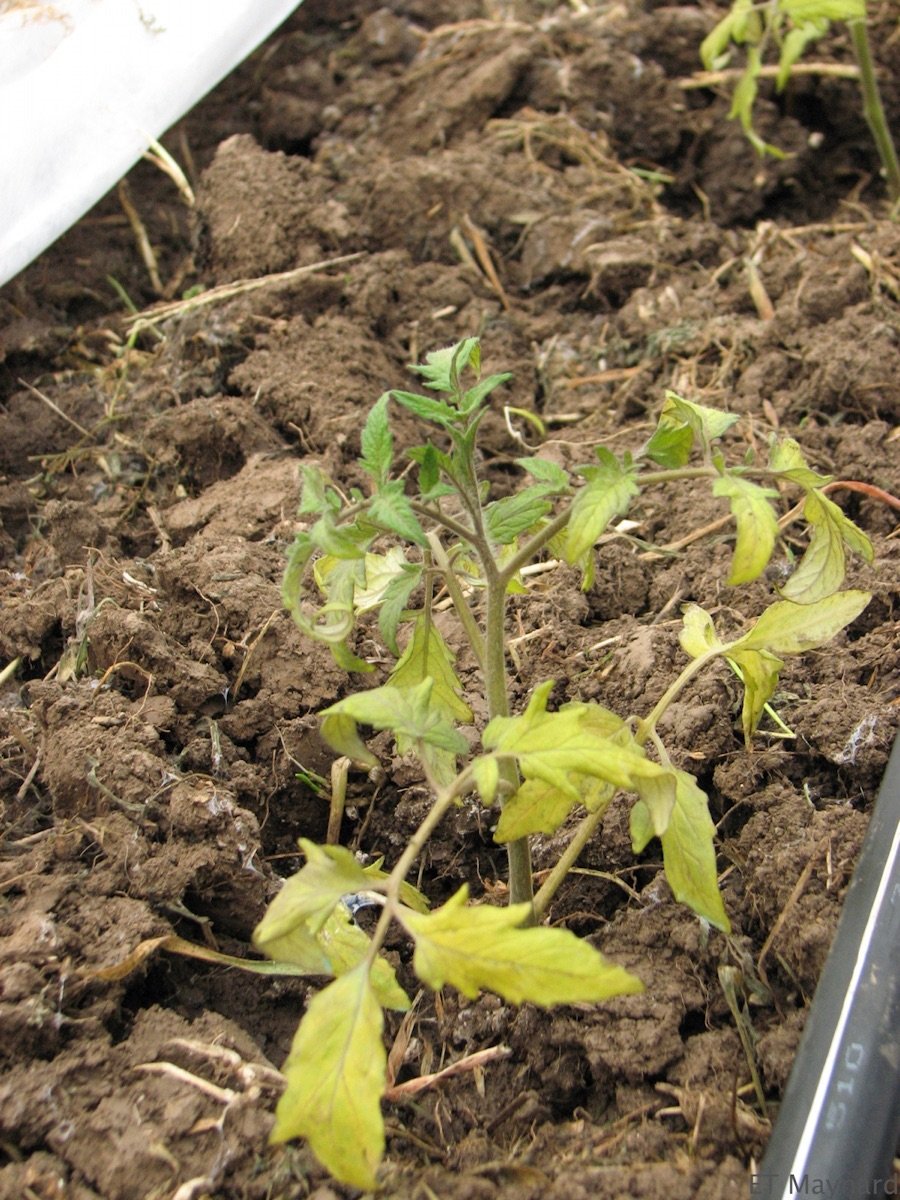
What Happens When Tomato Soil pH Is Too High or Too Low?
When your tomato soil pH is too high (alkaline), your plants struggle to absorb iron, phosphorus, and manganese. That’s when you’ll start seeing leaf curl, pale new growth, and yellowing between the veins. The nutrients are in the soil, but the plant can’t access them.
On the other hand, too low of a pH (too acidic) can lock out calcium, which is a big reason why tomatoes get blossom end rot — that nasty black spot on the bottom of your fruit.
If your tomatoes look sad even though you’re watering and fertilizing like you should, the pH level might be the silent problem.
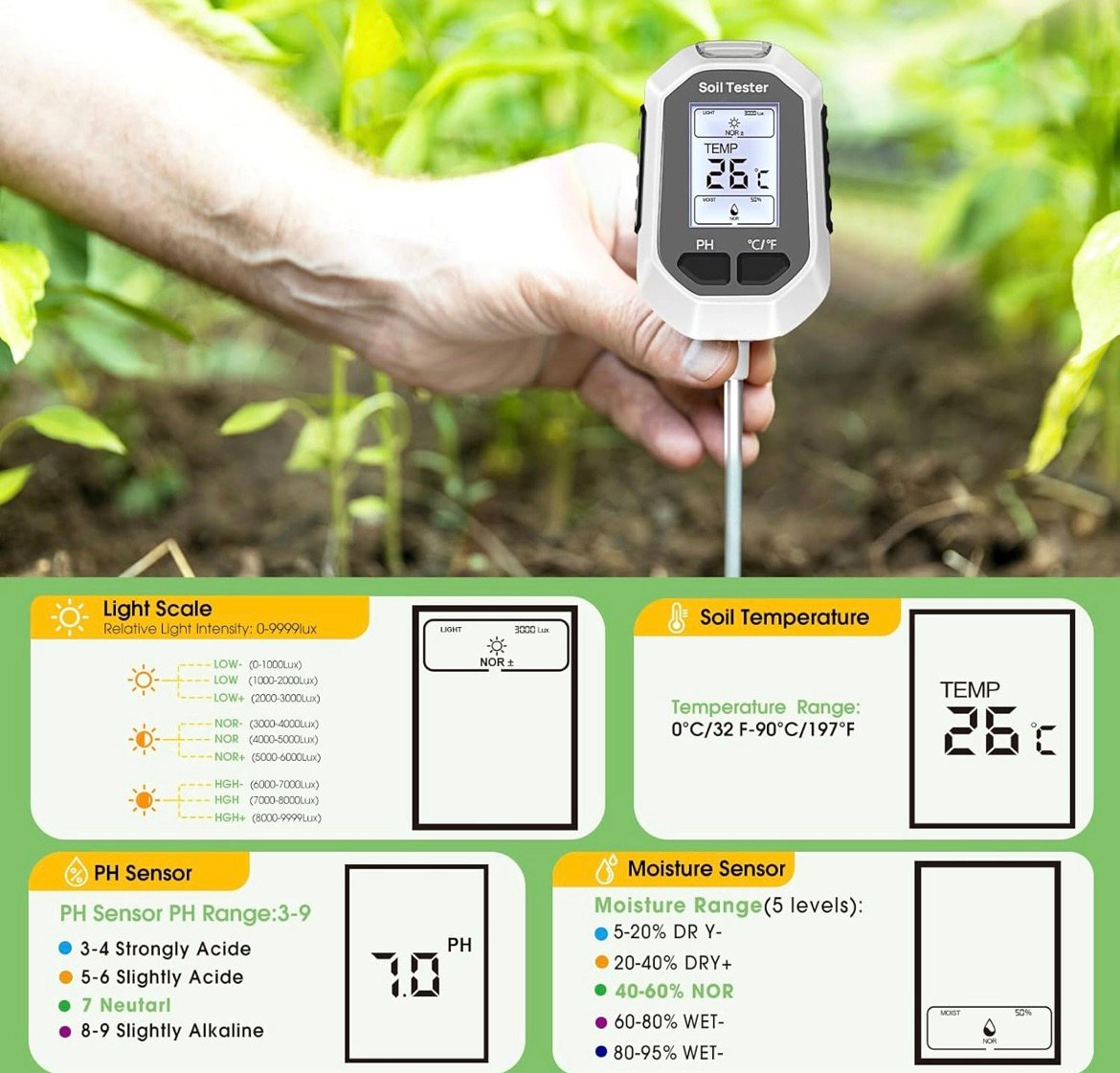
How to Adjust Tomato Soil pH the Right Way
If your soil pH is too high, you can lower it by mixing in elemental sulfur or even something more natural like composted pine needles. Just go slow — drastic changes can shock your plants.
To raise your tomato soil pH (if it’s too acidic), you can add garden lime or wood ash in moderation. But again, test first. The soil pH test kit is your best friend here — don’t just guess.
I usually retest my soil a week or two after making any changes, especially early in the growing season.
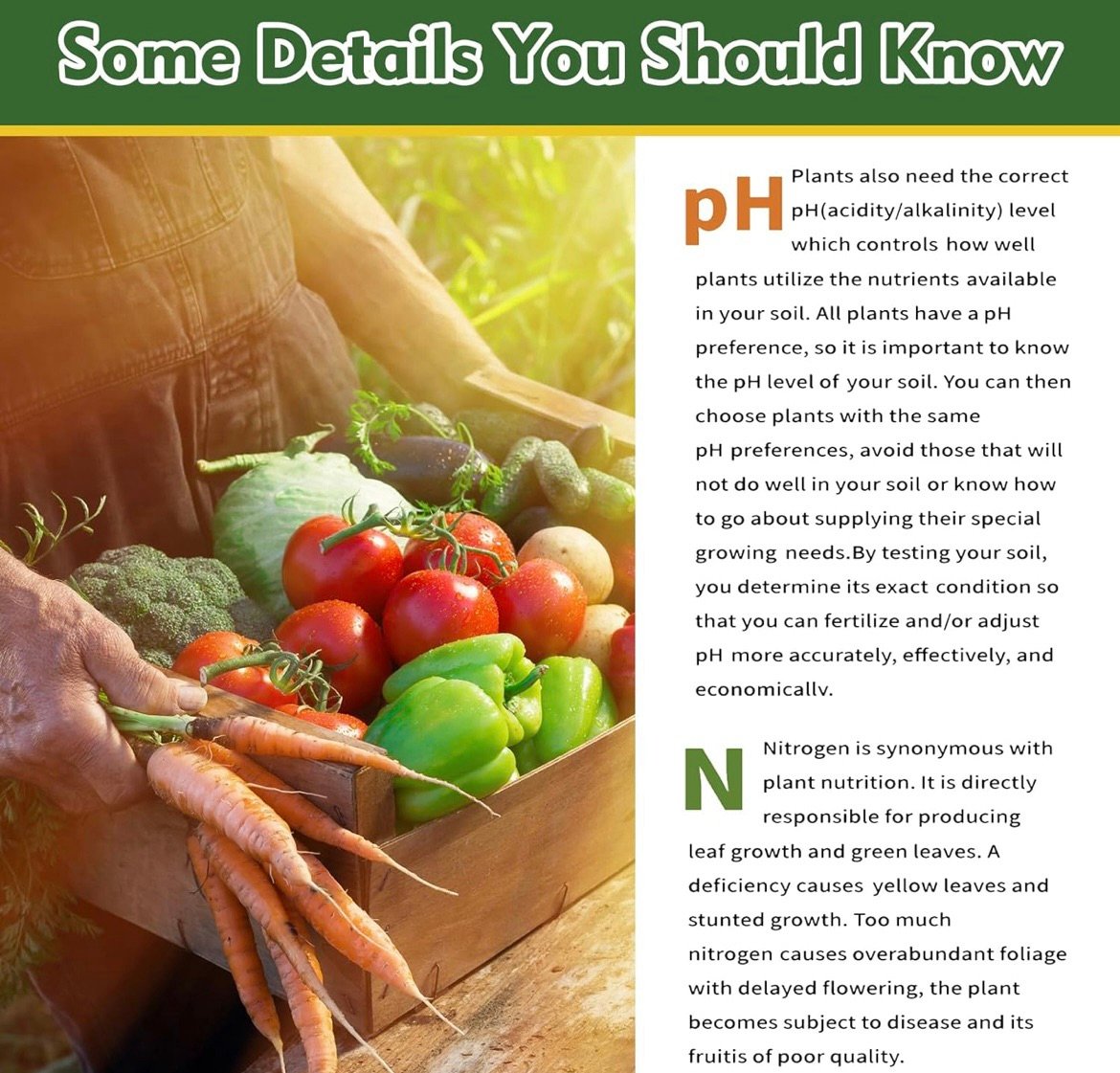
How Often Should You Test Tomato Soil pH?
Honestly? More often than most people think. I check my soil pH at the start of each growing season and then again every few weeks during the heart of tomato season. Rain, watering habits, and fertilizers can all shift pH over time without you even noticing.
Using a tool like this 4-in-1 soil meter for tomato plants makes it super easy to monitor not just pH but also moisture and sunlight — which means fewer surprises and healthier tomatoes.
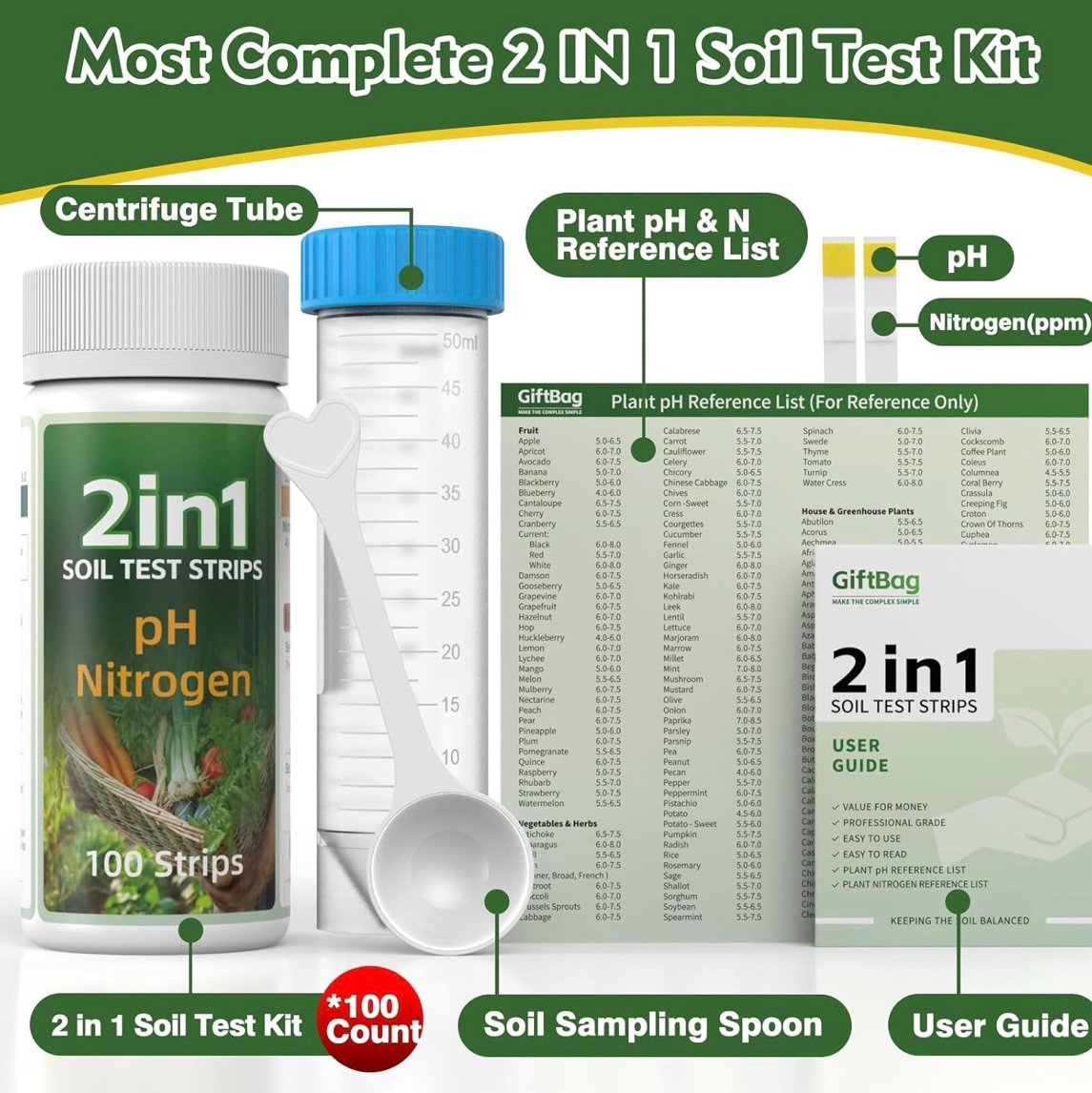
Should You Test Before You Plant or After?
Always test before you plant if you can. That way you’re not wasting your time planting in soil that’s going to stunt your growth or mess up fruit development.
But even if you’ve already planted, it’s not too late. A quick test with a reliable soil pH and nitrogen kit can help you make minor tweaks to get your plants back on track.
If you’re already growing and noticing yellow leaves or stunted growth, check out this post: The real reason your tomato plants are turning yellow — it might be connected to pH or other hidden issues.
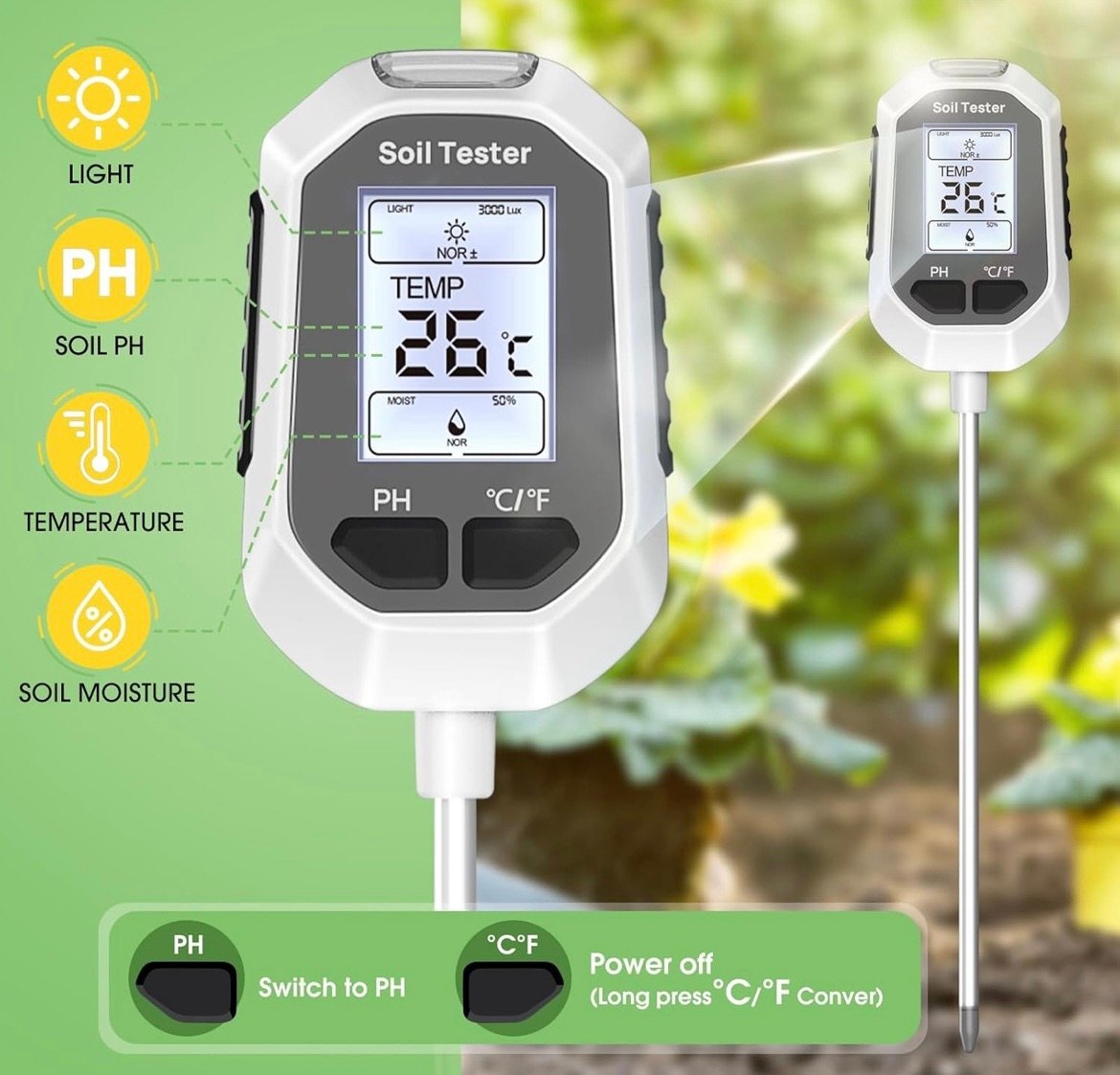
Best Soil pH Range for Tomatoes
Tomatoes thrive when the soil pH is between 6.0 and 6.8. That’s their sweet spot — not too acidic, not too alkaline. At that level, they can soak up all the essential nutrients they need to grow strong vines, deep roots, and tons of juicy fruit.
If you’re not sure where your soil stands, don’t guess — grab a tool like this 4-in-1 soil meter and check. It’s a small step that can completely change your tomato season.
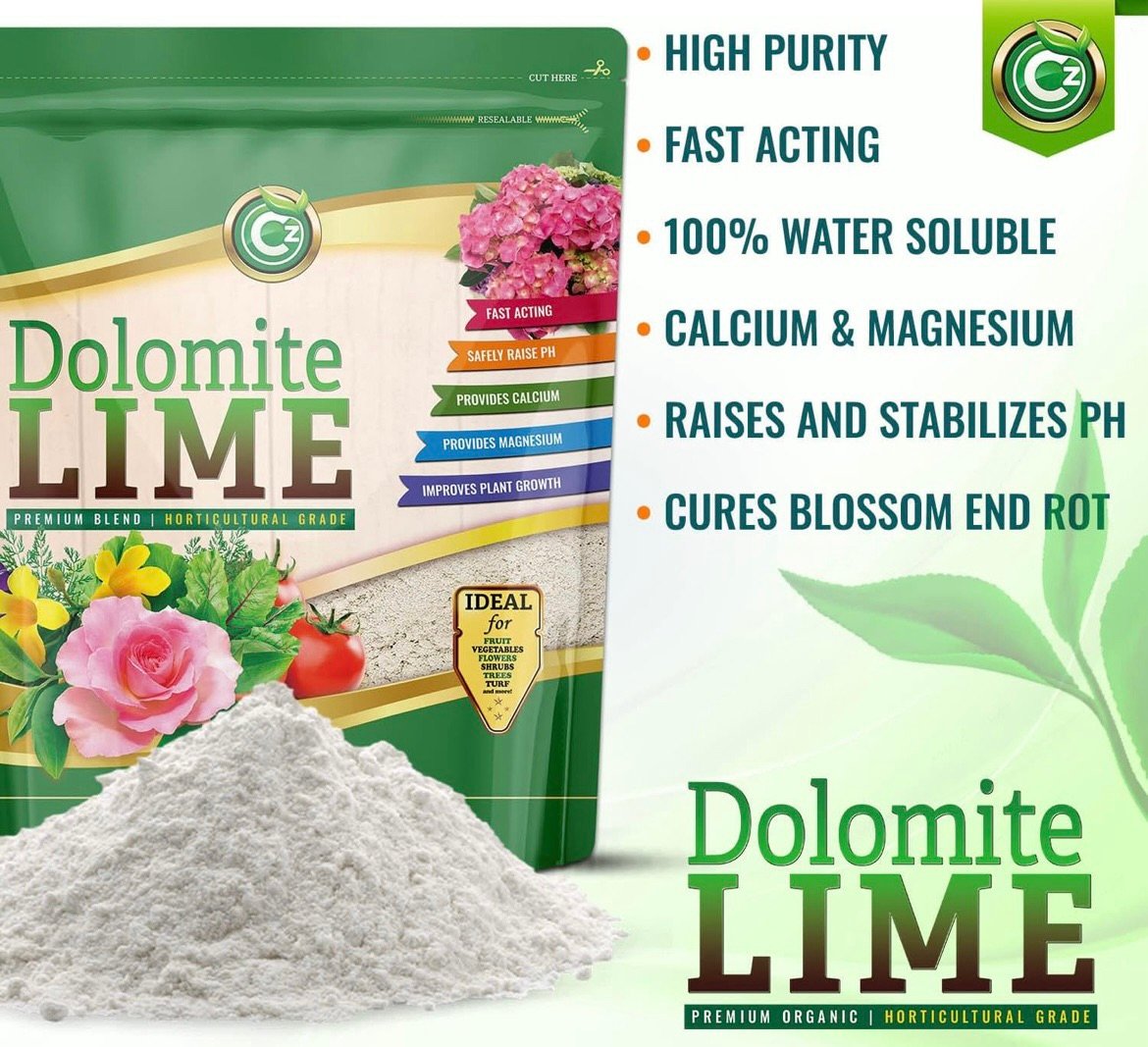
Why Soil pH Might Be the Reason Your Tomatoes Are Struggling
Sometimes you’re doing everything “right” — watering, feeding, pruning — but the plants still look weak or sick. That was me until I realized my soil pH was way too acidic from years of adding compost and peat moss without balance.
Since testing and adjusting it, I’ve had fewer diseases, bigger harvests, and way fewer headaches. If your tomato plant leaves are turning white or yellow, or the fruit isn’t setting like it should, soil pH might be the hidden culprit. And we’ve covered that in more detail here:
👉 Tomato plant leaves turning white and what to do about it

Frequently Asked Questions About Tomato Soil pH
What is the ideal soil pH for tomatoes in containers?
Stick to the same sweet spot — 6.0 to 6.8. Container soil can drift more quickly, so test it more often.
Can I use coffee grounds to lower soil pH?
Yes, in small amounts. They’re slightly acidic, but don’t overdo it or you’ll risk nitrogen imbalance too.
How do I raise my soil pH fast?
Use garden lime, but do it in small doses and mix it in well. Always retest after a week or so.
What happens if I ignore my soil pH?
You risk poor fruit production, leaf problems, and wasting money on fertilizers your plants can’t even absorb.
Should I test pH before using tomato fertilizer?
Yes — some fertilizers change the soil pH, so test first so you know if you’re helping or making things worse.
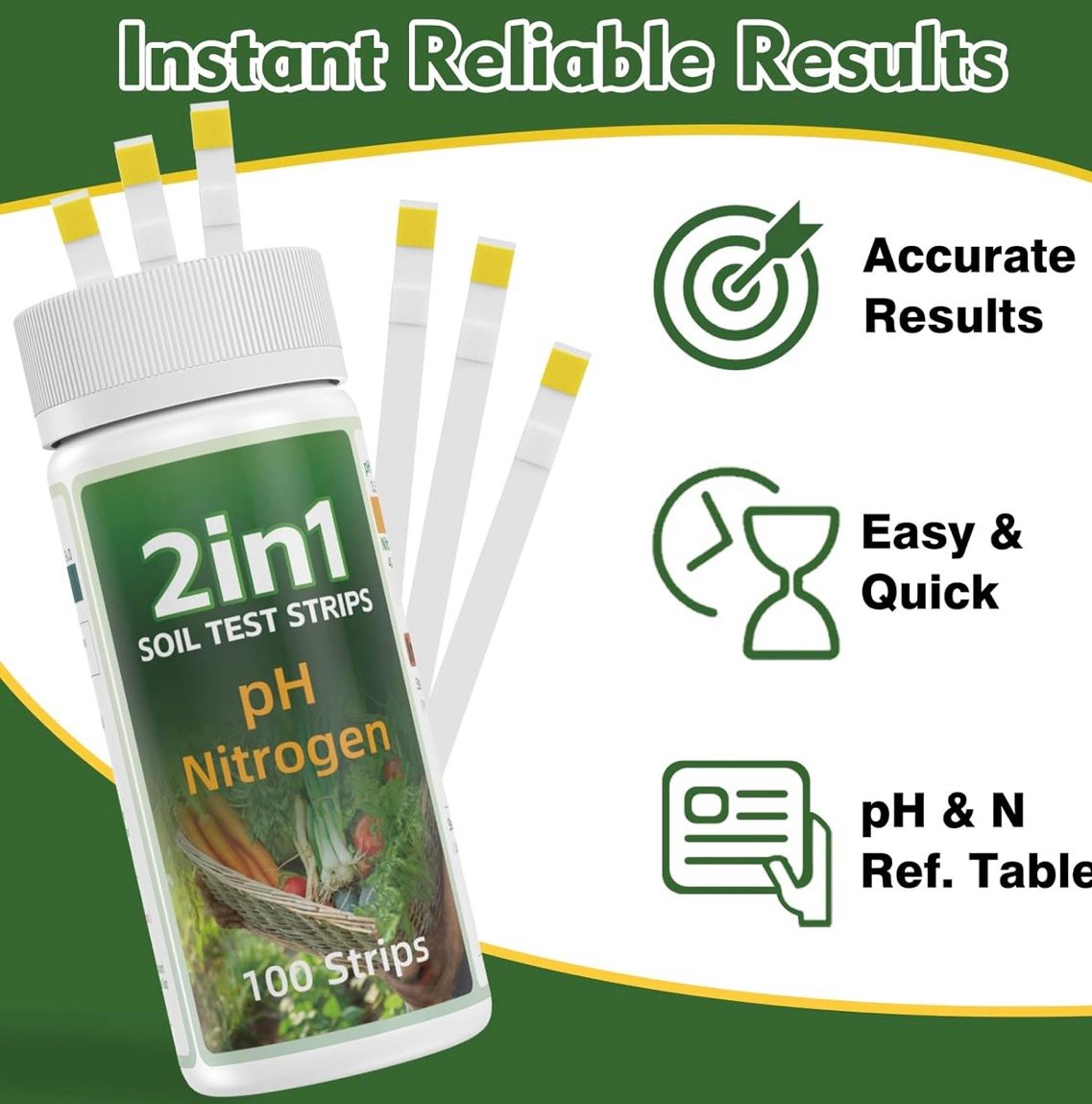
How to Test Your Tomato Soil’s pH at Home
You don’t need to send soil off to a lab — I’ve been testing mine right in the garden with this soil pH and nitrogen test kit. It comes with everything you need and gives fast results.
If you’re more into gadgets, I also recommend the 4-in-1 soil meter. It’s been a game changer for me. I can check pH, sunlight, moisture, and even temperature in seconds — and with tomatoes, all four of those matter more than people think.

What Causes Soil pH to Shift Over Time?
Even if you start your tomato bed off right, things change — fast. Here’s what I’ve learned can throw off your pH balance:
- Rainwater – especially acidic rain, which lowers pH.
- Fertilizers – some raise it, some lower it (especially ammonium-based).
- Compost and organic matter – over time, these can acidify your soil.
- Irrigation water – if your water is hard or soft, it can skew things either direction.
That’s why I check my pH every few weeks during peak season — tomatoes are sensitive, and staying on top of this has saved a lot of headaches.
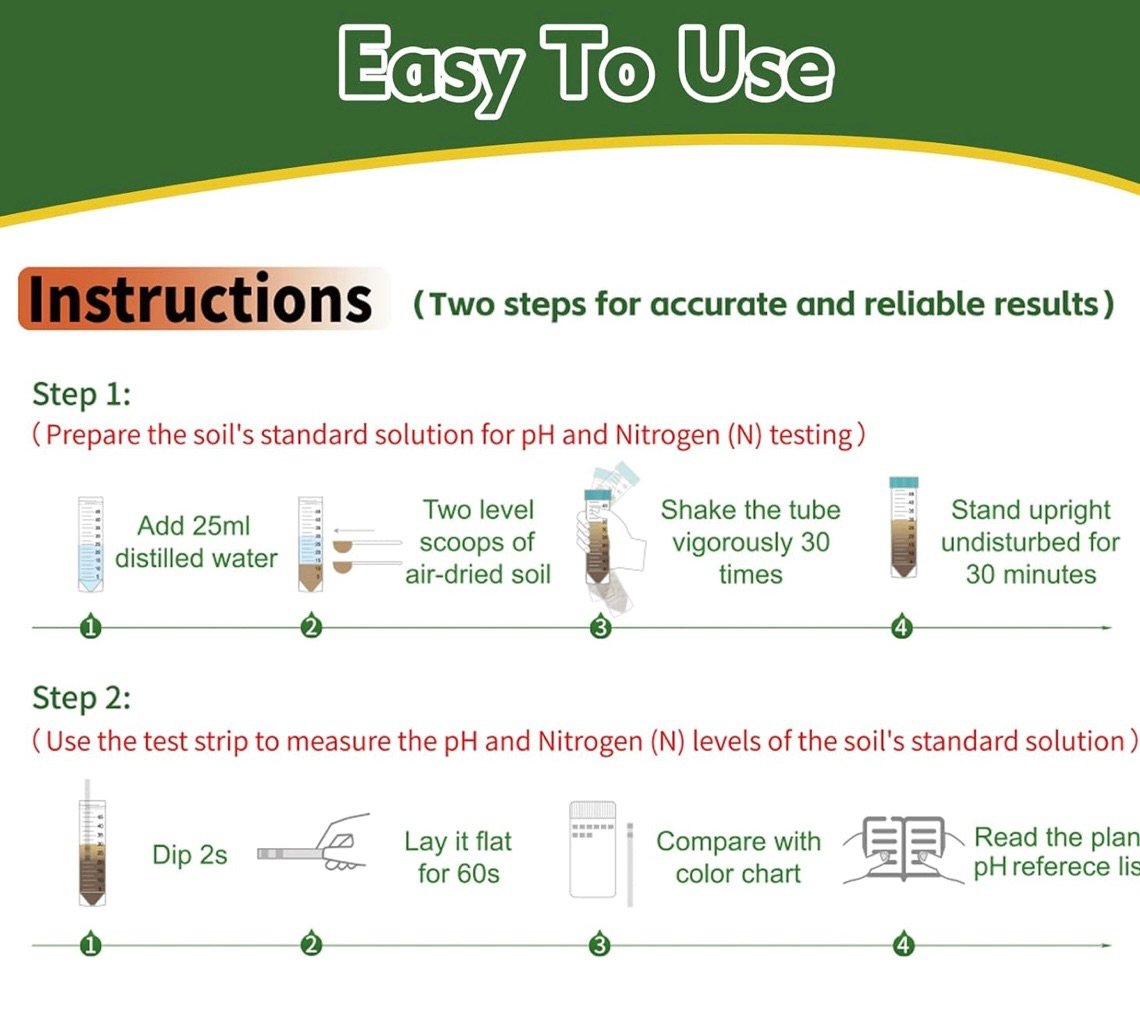
Adjusting Soil pH Naturally (and Safely)
If your soil isn’t in the tomato comfort zone, don’t panic. I’ve learned a few simple ways to fix it without overdoing it or harming your plants:
To raise pH (if your soil is too acidic):
I use garden lime or wood ash sparingly. Lime works slower but steadier, while wood ash gives a quicker bump.
To lower pH (if your soil is too alkaline):
I’ve added elemental sulfur, peat moss, or even pine needles around the base of my plants. Just go slow — tomatoes don’t like sudden changes.

How Soil pH Affects Tomato Flavor and Nutrition
Here’s something most people overlook: soil pH doesn’t just affect plant health — it directly impacts how your tomatoes taste.
When the soil pH is balanced, your tomato plants can absorb calcium, potassium, phosphorus, and other minerals that boost flavor and nutrition. I’ve noticed my tomatoes are sweeter, less watery, and more vibrant when the pH is dialed in.
Even blossom end rot — that dreaded black spot on the bottom of tomatoes — can often be traced back to a pH imbalance. Once I fixed mine, it almost never showed up again.
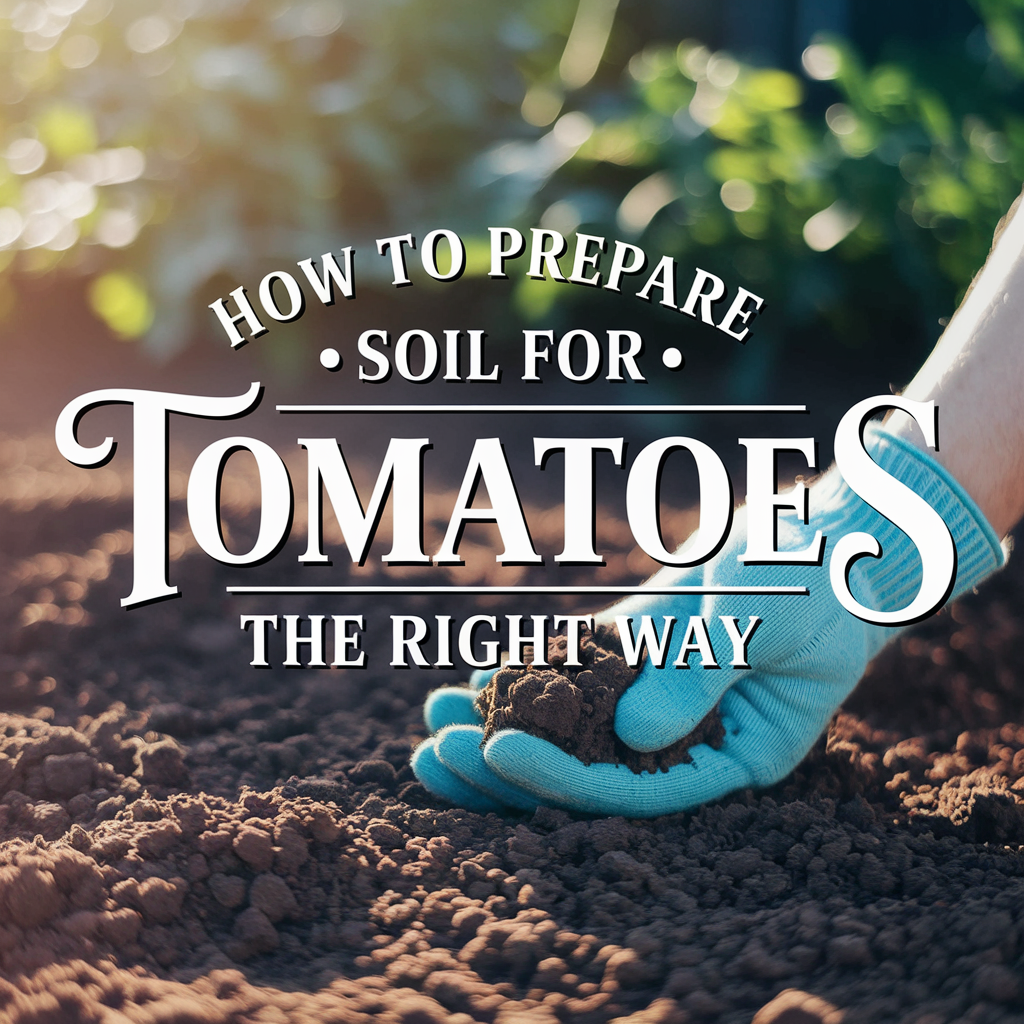
As an Amazon Associate we earn from qualifying purchases through some links in our articles.

